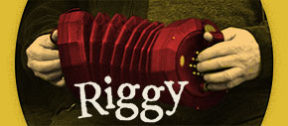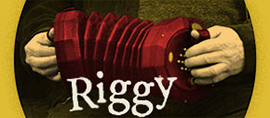This piece was written by Gwen Orel (2008), the only New York journalist who writes for both The Forward and Irish Music Magazine
A couple years back, during a 92nd Street Y concert featuring the modern Celtic band Solas, it dawned on me that everyone in the room who wasn’t Irish-American was Jewish. The café was closed for Passover, and you could look around and see who’d brought macaroons in Ziploc bags, and who kept asking for explanations. When I’d presented Irish-themed shows in both New Jersey and Alabama, I’d noticed the same thing. Matt and Mitch Greenhill, of Folklore Productions, are a Jewish father-son management team with one of the most significant rosters of Celtic acts in the business: Dervish, Flook, Lunasa, Karan Casey. (They also represent the Klezmatics.) What makes so many Jewish-Americans with no Celtic heritage pour sweat equity into presenting, producing, writing about, and traversing long distances to enjoy Celtic music?
The Pub Life “Well, that’s one of the great mysteries in our music—all I can say is that there are a lot of them!” says Joanie Madden, Irish flute player and leader of the “supergroup” Cherish the Ladies.
No one knows exactly how many Jewish fans there are of Celtic music, but their ranks include promoters, musicians, and DJs. Brian O’Donovan, who hosts a Celtic radio show at WGBH, says a “large portion” of his mailing list is Jewish; Irish songstress Susan McKeown, who also sings with the Grammy-winning group the Klezmatics, says a “significant number” of Jews make up her own list.
On St. Patrick’s Day, the Landmark Tavern in Hell’s Kitchen is hopping, and the Monday-night seisun (informal jam session) run by Don Meade is starting late. But Khaya Efraim won’t budge from her coveted table. She loves the beat, the repetition, the unison. A Sephardic Jew originally from Russia, she visited Ireland and fell in love—with five musicians jamming in a pub. “I stayed until they kicked me out!” she recalls. “I was mesmerized!” Uillean piper Richie Wolff, who is Jewish, plays here at the Landmark. He describes Irish music as being “like an infection. But a good infection.” He was interested in klezmer, but found it harder to break into: “There aren’t too many Jewish pubs.”
I caught the bug as a teenager—my brother brought some albums home from college, and that was it. Consider when Clannad’s Maire Ni Brennan (she now goes by Moya) sings “A Neansai Mhile Gra” (“Nancy of the Thousand Loves”) in a gentle, sweet, slightly breathy soprano, accompanying herself on the harp; the sound seemed to lure me to Fairyland. Then there was the passion and the excitement of the Scottish war song “Donald MacGillivray,” as interpreted by Silly Wizard. Just listen to the fast, furious fiddle solo by the late and lamented Johnny Cunningham. Doesn’t it make you want to march over some hills and resist some English? As a college DJ, I did a show called Wild and Beautiful, named after the Silly Wizard album; during Celtic shows at San Francisco’s Great American Music Hall, occasionally someone would recognize my voice, unfazed by the blue lipstick and white pancake makeup of my post-punk persona. When I use will-call at shows, the name on the ticket envelope often reads “O’Rel.” Irish guitarist Gerry O’Beirne e-mails: “It never occurred to me that you weren’t Irish.”
The History and/or Mysticism “There is some connection, some reason why Celtic music has sort of a pull for Jewish people,” says rabbinical student and Celtic-music fan Tom Gardner. (By “Celtic” music, I refer to Irish, Scottish, and English fare.) The first time he heard Celtic music, says Gardner, “It felt familiar. I’m not sure what it is, but it speaks somehow to our souls.”
Photographer Judy Schiller has been to Ireland seven times. Her seisun of choice is in Woodside, at the Cuckoo’s Nest. To her, “the music is very spiritual. The instruments sound ancient—they resonate deeply.” She’s even combed through the Jewish cemeteries of Dublin, looking in vain for an ancestor.
There are legends that the Irish are the lost tribe of Israel, that the musical connection is biblical, that Jeremiah landed with the books of the Torah, which is somehow related to Tara. The cultures share a dry sense of humor, a love of language, and sentimental schmaltz. The Celts originated in Central Europe, after all. “There’s a sorrow that unites both of those peoples,” McKeown adds. “The Irish have been put down and moved on for hundreds of years, and the Jews have been moved on since time began. And nobody could put it into words in a miserable song that could touch your heart and be more beautiful than the Jews or the Irish . . . there’s a lot of hope.”
“I think part of it is longing,” agrees Riverdance composer Bill Whelan. “There’s a longing in the slow airs that’s expressed in the music. The first time I came to New York to work in 1992, I was brought out here by Leon Uris. He thought the Irish and the Jews had a load of shared cultural and emotional connection.”
Mick Moloney, a musician, National Heritage Award winner, and NYU professor of folklore, observes that the Jews and the Irish are “both diasporic cultures. We’re scattered, and we maintain a kind of identity through art and ritual. There’s community—something people are starved of today.”
The Virtuosity But history doesn’t explain musical beshert. Twenty-five-year-old Isaac Alderson, a master of the uilleann pipes, flute, and whistle, is back in New York after two years touring with Eileen Ivers and Immigrant Soul. He became obsessed with Celtic music after seeing the movie Braveheart when he was 11. “I always sort of wished I was Irish,” he says. He carried a tin whistle around in his pocket and played it on the train between classes.
Then there are the Bothy Band and Planxty, the great Irish groups of the ’70s. “It was like Sgt. Pepper’s goes Irish!” raves Myron Bretholz, the Baltimore bodhran (traditional goat-skin drum) expert. “Everybody remembers where they were when they first heard them!”
Lisa Gutkin, the Klezmatics’ fiddle player, came to her love of Jewish music after years of playing in Irish bands, including Whirligig, the group she founded. “My grandmother used to go to Yiddish singing groups,” she recalls. “She’d drag me by the hair—to me, it was old people’s music.” Gutkin even resisted when the Klezmatics first called, but then she heard some of the really old music and fell in love, too.
Downtown at the 11th Street Bar on Sunday night, Gutkin sings “Gonna Get Through This World” from the Grammy-winning Wonder Wheel, the Klezmatics’ tribute to the lyrics of Woody Guthrie. The break is an Irish reel; on the album, it’s a niggun(wordless Hasidic tune). Aidan Brennan accompanies her on guitar and vocals. All the players at this seisun, led by master fiddler Tony DeMarco, are professionals: Fiddler Patrick Mangan and Matt Bashford both hail from Riverdance. Close to 1 a.m., Alderson and Madden arrive. The community’s amazing; there’s good craic, as the Irish say. The party goes on until 5 a.m.
The Simplest Explanation “There is no overlap between the styles—no emotional overlap,” contends klezmer pioneer Andy Statman. “It’s really just great music. Music can transcend culture.” Piper Bill Ochs, who teaches at the Irish Arts Center, agrees: He’s Jewish, and finds the idea of a mystical connection “kind of a romantic blarney.” His students come from Japan, China, Singapore, Russia, Latvia, Germany, and France. “It’s just great music,” he insists.
Is that reason enough? In any event, Irish music continues to evolve: The bands Afro Celt Sound System and Baka Beyond merge African and Celtic styles. Ochs explains that the banjo and the bouzouki are recent additions, and there’s a precedent for such borrowing: The fiddle comes from Italy, and even the harp, Ireland’s national instrument, originated elsewhere—in the Middle East.

